Subscribe now and get the latest podcast releases delivered straight to your inbox.
What does inbound marketing cost?
Inbound marketing is a long-term, ongoing practice and includes several moving pieces: Strategy and planning, software, website design, content creation (written and video), social media, paid media, and coaching and training.
- Strategy and planning can cost you anywhere from $50-125 per hour for a freelancer (total depending on how many articles you write) to an average of $91,000 for hiring someone in-house.
- Software costs begin at about $200 a month.
- Website design costs can start at a few hundred dollars and go up to $75,000.
- Written content creation can range from $75 per article to an average $63,000 salary.
- Hiring a videographer in-house usually entails an average salary of $48,000.
- Project-based SEO services begin at $3,500.
- Paid media can range from $10,000 to $100,000+.
- Sales and marketing training can range from $8,500 to $15,000 a month.
Inbound marketing is like office space, employees, or even a loan. It's an investment in your business's future.
Adopting inbound into your organization has its price tag, no doubt, but like any smart investment, it ends up paying for itself in not only return on investment (ROI), but in competitive advantage as well.
From website design and landing pages to social media and blogging, inbound marketing touches aspects of your entire business to achieve your business goals.
With so many moving pieces and tactics to consider and a wide range of costs within them, it can be difficult to gauge what kind of monetary commitment you’re taking on.
What does inbound marketing cost?
Unfortunately, the answer to this question is as annoying and ambiguous as you expect: it depends.
Implementing an inbound marketing strategy is a long-term, ongoing commitment.
Once you kickstart your strategy, many costs will be recurring indefinitely, and even those that don't can vary greatly depending on the types of strategies you want to implement, whether you outsource or keep things in-house, and how quickly you want to see results.
In this article, we’ll break down everything you need to know about how much inbound marketing costs in 2024 including:
- What goes into the cost of inbound marketing
- The cost of inbound sales and marketing training
- The cost of working with an inbound marketing agency
Let’s start from the top.
What goes into the cost of inbound marketing?
Since the costs of inbound marketing can vary so widely, we're going to provide average prices based on the assumption that you want the highest-quality work.
You can very well go to Fiverr and get someone to write a $10 blog post for you, but it likely won't be the quality content you need to win over readers or rank in search engines — and the same goes for almost every inbound marketing task.
With that in mind, the estimates here are how much you should expect to pay if you want to see real results.
In terms of labor costs, we've broken them down into the main areas of:
- Time
- Strategy and planning
- Software
- Website design
- Content creation (written and video)
- Social media
- Pay-per-click (PPC) and social ads
- Training/coaching
Time
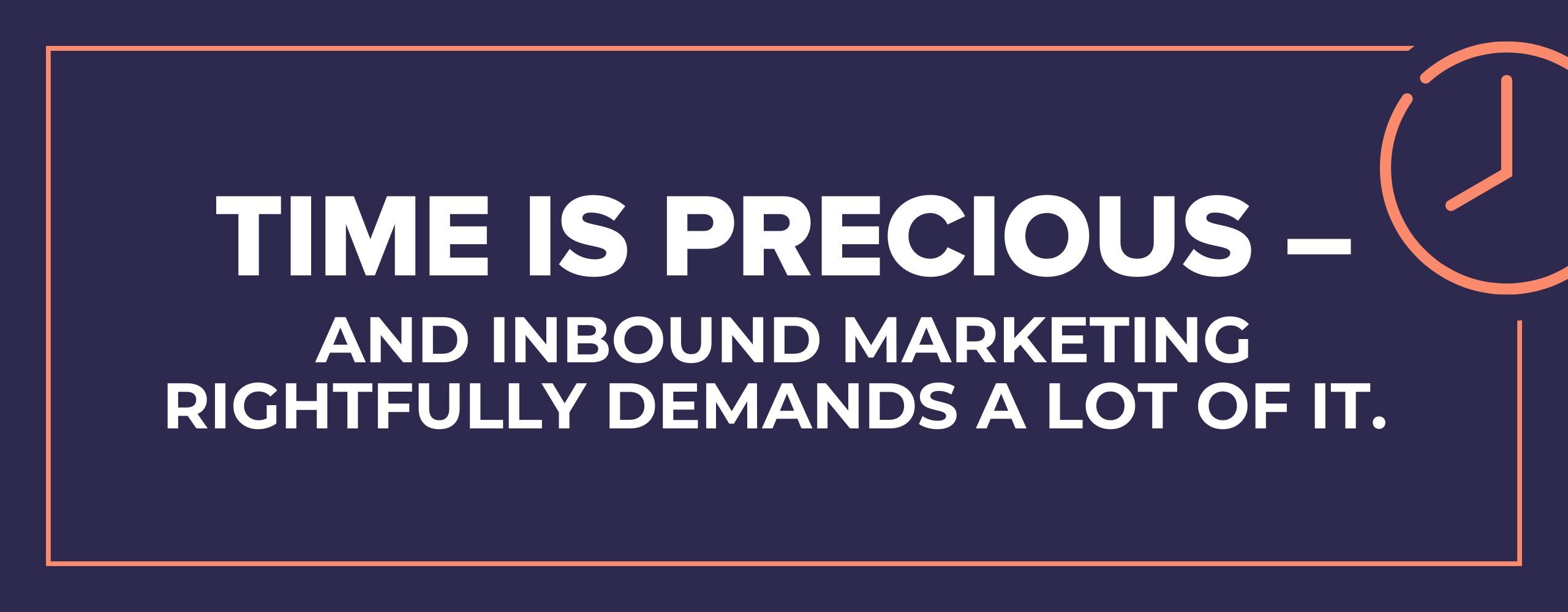
First off, we need to address the cost of time. Time is precious — and inbound marketing rightfully demands a lot of it.
For example, in our experience, we recommend client take on inbound tasks like content creation internally, rather than hiring an agency. You also must take into account the amount of time it takes to start seeing results from inbound marketing.
Realistically, an effective inbound marketing campaign takes a few months to produce substantial traffic and leads, and this relies heavily on getting content indexed by Google. If you're just beginning to build an online presence, this process can take quite a bit of time.
That said, you can use inbound marketing materials immediately in the sales process using assignment selling, but actual traffic takes longer.
Overall, inbound marketing is not a methodology for those who don't have time to spend.
Strategy and planning costs
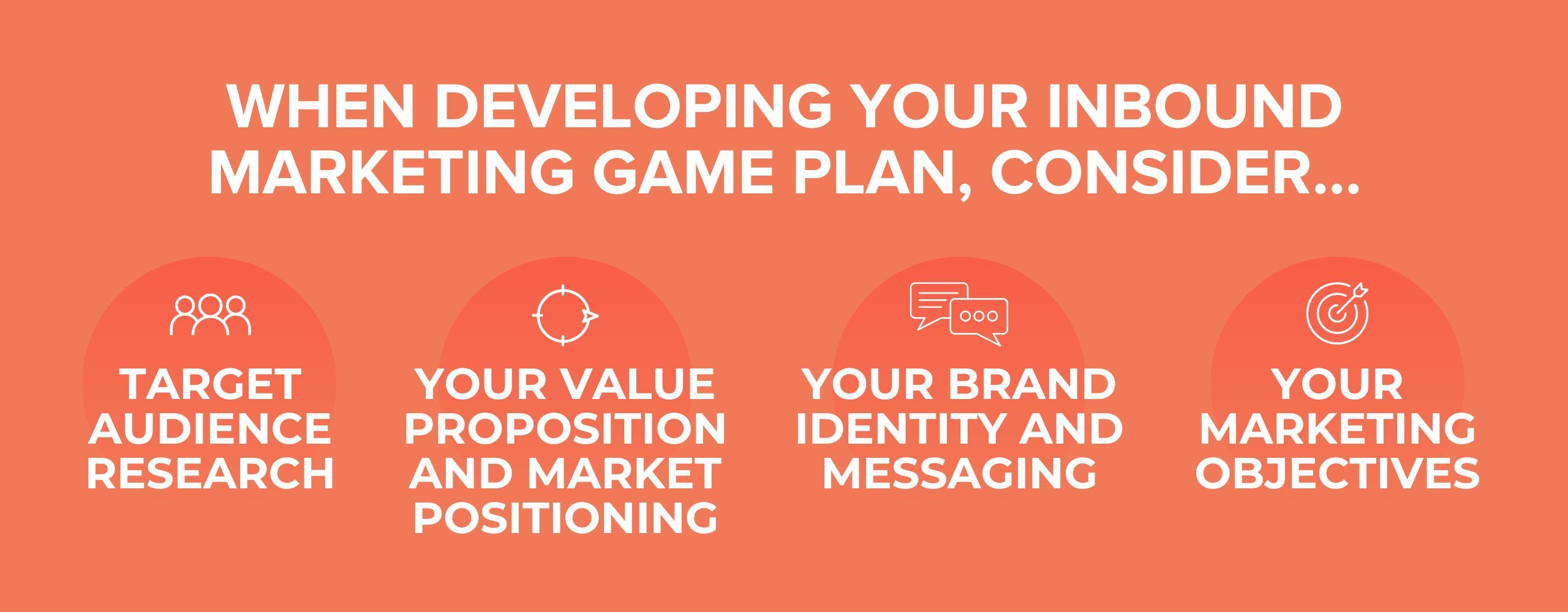
Successful inbound marketing, like all business endeavors, requires a strategic approach. There's a lot to consider when developing your inbound marketing game plan, such as:
- Target audience research
- Your value proposition and market positioning
- Your brand identity and messaging
- Your marketing objectives
According to PayScale, an experienced marketing strategy consultant earns an average salary of $91,000. Marketing strategy freelancers on Upwork with a high job success score have rates that range from $50 to $125 per hour.
If your business doesn't already have a solid inbound marketing strategy in place, you can expect to pay anywhere from $1,000 to $10,000 in consulting fees, depending on the experience of the person/agency you work with and how much you want them to plan for you — and ongoing consultant fees can cost even more.
Marketing automation software and tool costs
While marketing automation software isn't mandatory, it does make executing and analyzing inbound marketing significantly easier.
At IMPACT, for example, we use HubSpot for all of our marketing automation.
It allows you to control every aspect of your marketing funnel (email, social media, landing pages, forms, blogging, etc.) on one platform and in turn, see how each element interacts and performs. But there are other similar alternatives available.
For any of the software platforms, you can expect to spend as little as $200 per month to a few thousand dollars per month, depending on your plan, your business size, and how extensive you need the service to be for you.
For many companies, HubSpot and Pardot are top choices; you can learn more about each in HubSpot vs. Pardot for Marketing: A Head-to-Head Comparison.
In addition to marketing automation software, we'd recommend using a customer relationship management system (CRM). While the HubSpot CRM is available for free, the industry-standard Salesforce ranges from $25 per user per month to $300 per user per month.
The cost for your needs could fall anywhere along a large spectrum, so look closely at pricing information and feature listings to make sure you're getting what you need.
Depending on your inbound marketing strategy, you may also find yourself in need of creative software (i.e. design and video editing), testing tools, and social media tools, among other things.
Website design costs
Everything you do in inbound marketing is aimed at one goal: bring prospects to your website and convert them into leads and customers.
Your website needs some key features such as a blog and content hub (or what we call a learning center), landing pages with forms and calls-to-action, among other things, to be equipped for inbound marketing success.
If you already have these elements, great, but if you don’t you may need a website built or redesigned.
A poorly-designed or performing website can send prospects running back to their search results. Even if someone is interested in what you have to offer, poor user experience or glitches in your design can prevent or deter them from doing business with you.
If you already have a modern website with a clean design that's also mobile-friendly, you might only need a few tweaks and some updates to the content, but if not, it might be time for a website redesign.
Designing your website yourself
If you have some experience with web design, IMPACT's Vin Gaeta explains:
"Building or redesigning a website yourself with a template is usually the cheapest option. It can range anywhere from a few hundred dollars to $3,000 or more, but the real “cost” here is the time and hassle required.... New startups with limited budgets and no web developer often have to start small. ThemeForest offers tons of affordable website themes (especially for WordPress) to choose from that usually cost around $30 to $100."
Hiring a freelancer
Vin continues:
"Depending on what your goals are, you’ll be able to find a freelancer that will charge anywhere from $2,000 to $5,000 for a simple website and upwards of $10,000 to $20,000+ for a bigger website with a variety of template designs, custom features, and a more professional aesthetic than you may be able to create on your own."
Hiring an agency
"A simpler website redesign with an agency can run anywhere from $15,000 to $30,000 depending on the size of the site, whereas websites with a large page count, custom functionality, and more unique needs can cost between $40,000 and $75,000+."
As your business grows and changes, your website must reflect this. You will want to take user data into account when updating your site.
Increasingly, design agencies are employing a growth-driven design model that front-loads design and development work and then moves to a retainer model so that agency experts can tweak and adjust your site as user data dictates.
According to Vin, "You can expect anywhere from $5,000 per month to $10,000 per month on growth-driven design with an agency depending on how aggressive your goals are and how much focus you’re willing to put into research and updates."
In addition to the design costs, regardless of which option you choose, you need to consider long-term website management. You may find that you need internal talent to manage your website and handle minor design and development needs.
Content creation costs
Content is the most time-consuming part of the process, but also one of the most important. Once you've got your inbound strategy in place, you'll need to publish content on a regular basis.
Written content
While many companies are quick to outsource content creation, that's often a bad idea. Working with an agency means your publication cadence will be limited, as well as your number of revisions, and the overall quality and authenticity of your content.
You want your content to sound like your business. When it's outsourced, that's harder to control.
Over the last decade, we’ve helped hundreds of companies realize a content strategy isn’t just something that can be outsourced or thrown onto an existing team member’s plate on top of other priorities. It needs to be the sole focus of someone in-house.
To make sure you’re creating the consistent, high-quality content you need to drive traffic, leads, and sales, we advise that you hire someone who can own the content production side of your inbound marketing. We typically call this a content manager.
Not only will your in-house content manager ensure content is published regularly without fail, but they will also:
- Obsess over creating high-quality content that accurately reflects the true tone and spirit of your brand.
- Interview your company’s subject matter experts and capture their insights (and your company’s unique perspective) and integrate it into your content.
- Work directly with the sales team and help them integrate content into the inbound sales process, allowing them to close more deals faster.
- Monitor your organic search performance and routinely improve ranking and traffic results.
- Update existing content to ensure it remains relevant and effective.
- Oversee the other areas of your sales and marketing initiatives where content is critical (including your website, email, and social media).
- Work across departments and act in a central role between leadership, sales, marketing, and business development.
- Ensure everyone in the company is meeting their deadlines for content, including the boss!
According to PayScale, a content manager has an average salary of about $63,000, depending on experience.
If you opt to outsource, you might work with freelancers or writing services like Verblio. On average, you can expect to pay $75 to $150 per post for quality content. Even in the age of AI, quality content is expensive.
Depending on how much content you want to publish, you can expect the cost of high-quality content production to run anywhere from a few hundred dollars a month to several thousand per month.
Video content
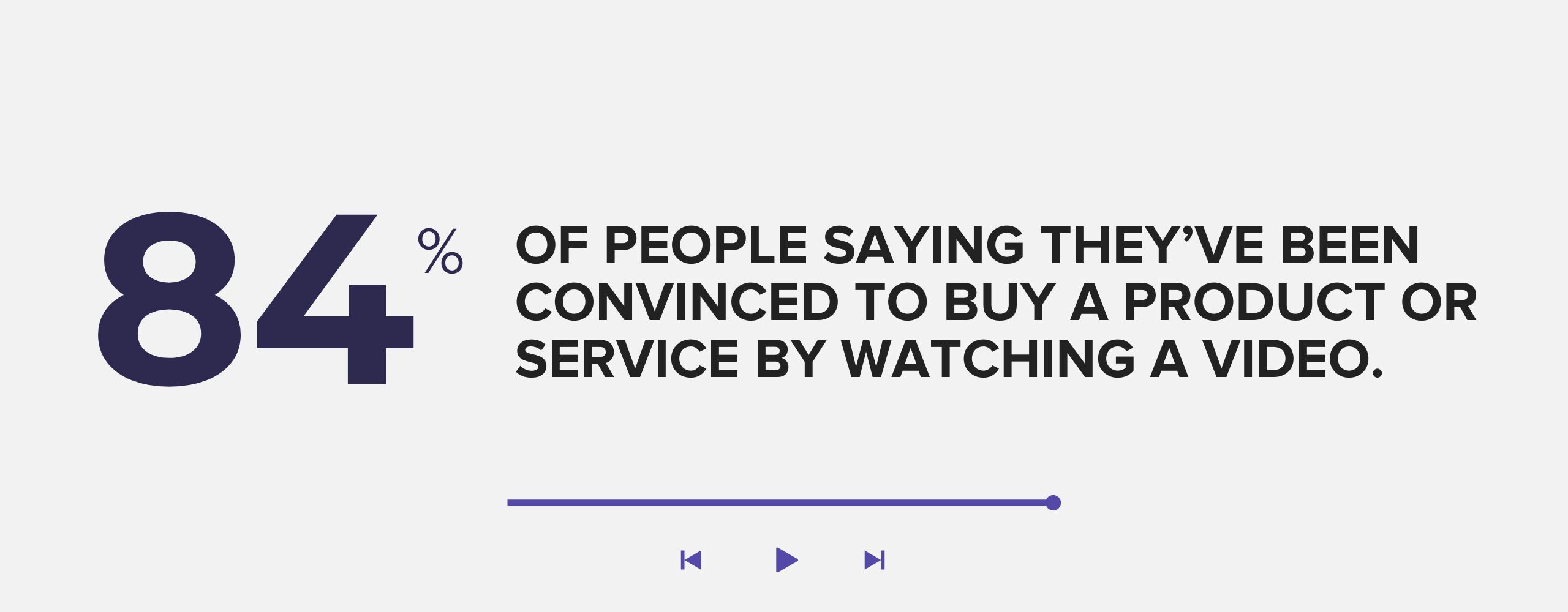
Content doesn't just refer to the written word. Customers today want to see video content as well. Plus, with 84% percent of people saying they’ve been convinced to buy a product or service by watching a video, not adding video to your toolkit could mean you're leaving money on the table.
We recommend hiring an in-house videographer to make video production more efficient.
Your immediate reaction upon reading this is very likely the same one we’ve heard from many business owners and managers over the years: “Why would a business like mine ever have the need for a full-time videographer? Are there really 40 hours of work per week for such a position in my niche?”
We’ve worked hand-in-hand with organizations across a wide range of industries to implement video, and never have we seen a situation where someone said, “You know, there simply isn’t enough work here for a videographer to work full-time.”
Between educational videos for your website and YouTube, social media content, and sales enablement videos used by your sales reps, there is certainly no shortage of video content to create.
An in-house videographer will allow you to produce the video content that truly builds trust with your buyers by directly addressing their questions.
PayScale reports that videographers earn an average salary of $48,000, but add in skills like video editing, strategy, and experience, and this price can increase.
When companies outsource video, they pay a premium for a small number of highly-produced videos. Working with an outsourced videographer will vary from project to project, but it wouldn’t be unrealistic to expect to spend at least $750 per video.
Search engine optimization (SEO)
You want your great content to get found by search engines and by potential customers.
If you want to hire a full-time SEO specialist, you can expect to pay a salary beginning at around $50,000, but you may just opt for an external expert to audit your site once a year or so.
Once your main website is optimized for search engines and you've done your local SEO (if applicable), you may be able to handle on-going keyword optimization on your own. But if you're considering paid search ads, you may want to start with an expert as well.
If you're looking for more advanced, technical SEO intel, this cost is likely to increase, but you can also get project-based support for around $3,500.
Social media
When used effectively, social media is an incredibly powerful engagement tool.
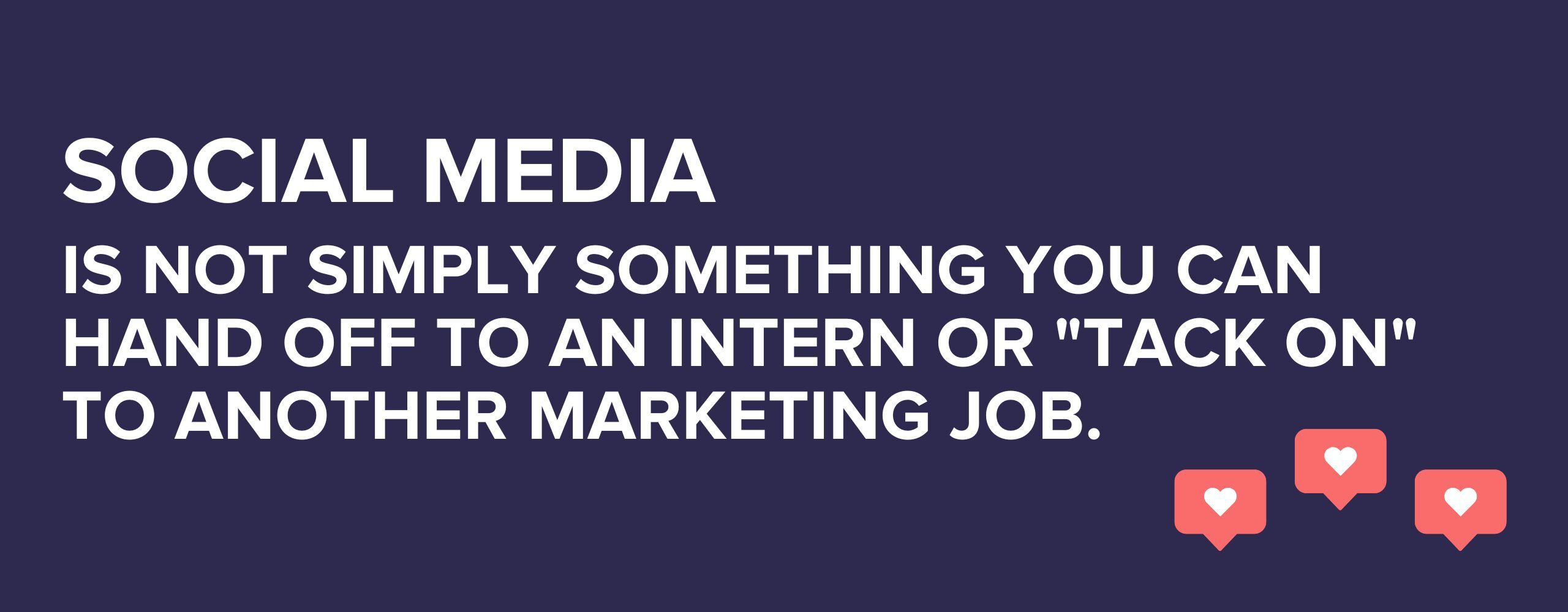
As more social networks pop up and your potential customers spend more of their time on them, the need for smart social content from your brand increases.
Contrary to popular belief, however, social media is not simply something you can hand off to an intern or "tack on" to another marketing job.
Like content creation, social media, when done right, is a full time job. It needs a full-time team member to plan, create/curate content, and engage with followers in a timely manner.
On average, experienced social media managers earn a salary of $71,000. Top-ranked social media managers on Upwork usually charge between $30 and $50 per hour for freelance work.
PPC and social ad costs
Speaking of social media, social media ads can be one of the most effective ways to boost your inbound marketing efforts.
Unless you have a lot of experience working with pay-per-click ads, it's usually more cost-effective to hire an expert consultant or an agency to manage your PPC campaigns for you.
Full-time PPC managers get paid an average salary of $90,000, but this number is steadily increasing. You can also work with an agency, which, depending on your goals, can range anywhere from $20,000 to $100,000+ per month.
If your campaigns and corresponding landing pages are optimized correctly, you should see a positive ROI on your PPC investment, making it one of your most effective monthly expenses.
Sales and marketing training and coaching
Once you've got an awesome team on board, you've got to make sure they have the right skills to accomplish your goals.
Whether you hired someone new or recruited internally, in some instances, your team may already have the skills you need to implement your inbound marketing strategy successfully and achieve your goals.
But if they don't, how can you help them level up?
There are plenty of professional development options available for your needs, but in our experience, training is the most effective path.
Sales and marketing training, like everything, is available at a wide range of price ranges to meet a variety of budgets, but for this conversation, we'll use IMPACT as an example.
We offer comprehensive sales and marketing training that we call They Ask, You Answer Mastery. It will help you achieve your inbound marketing goals by building the knowledge and skills of your internal team.
Your dedicated coach and trainers will design a program suited to your needs, helping you with everything from high-level strategy and HubSpot onboarding to content planning, content manager training, videographer coaching, and sales training.
After an average of 12-18 months, you complete the program and have the skills and experience to own your inbound marketing from then on. No relying on an inbound marketing agency again.
Our sales and marketing training costs between $8,500 and $15,000 a month. The range depends on how fast you’re looking to reach your desired outcomes, as well as individualized recommendations provided by our coaches.
Hiring an inbound marketing agency
If your company doesn't feel inclined to hire and train your own in-house team, it's not uncommon to turn to an inbound marketing agency.
Inbound marketing services from an agency offer several advantages:
- Access to experts in different areas of inbound marketing
- Can cost less (in the short term) than hiring an in-house inbound marketing team
- The ability to hit the ground running and get results quicker than figuring things out yourself
However, the cost of an agency will vary based on what you're looking to accomplish.
Inbound marketing agency pricing according to your goals
As a company with aggressive goals, you can expect to pay anywhere from $10,000 to $20,000 a month or even more. The more ambitious your goals are, the more money you will need to provide to effectively meet and reach those goals.
A great way to determine the success of your inbound marketing campaign is to look at your return on investment.
Return on Investment = (Gain from investment - Cost of investment) / Cost of investment
As an example:
Let's say you're going to pay $20,000 a month for the next twelve months to grow your company's revenue 25%, from $4M to $5M.
That means you spend $240,000 in hopes of making $1,000,000.
Using the formula, your ROI would be ($1,000,000 - $240,000) / $240,000 = 316%.
In other words, you would make about $3.16 for every dollar you spend.
As a company with more moderate goals, you can expect to pay up to $5,000 a month. You may or may not have the budget to drastically increase the sales of your company, but you can begin to develop relationships with potential customers and generate more qualified leads to your site.
Depending on your preferred investment, use the formula above to calculate the expected ROI.
The value of inbound marketing outweighs the cost
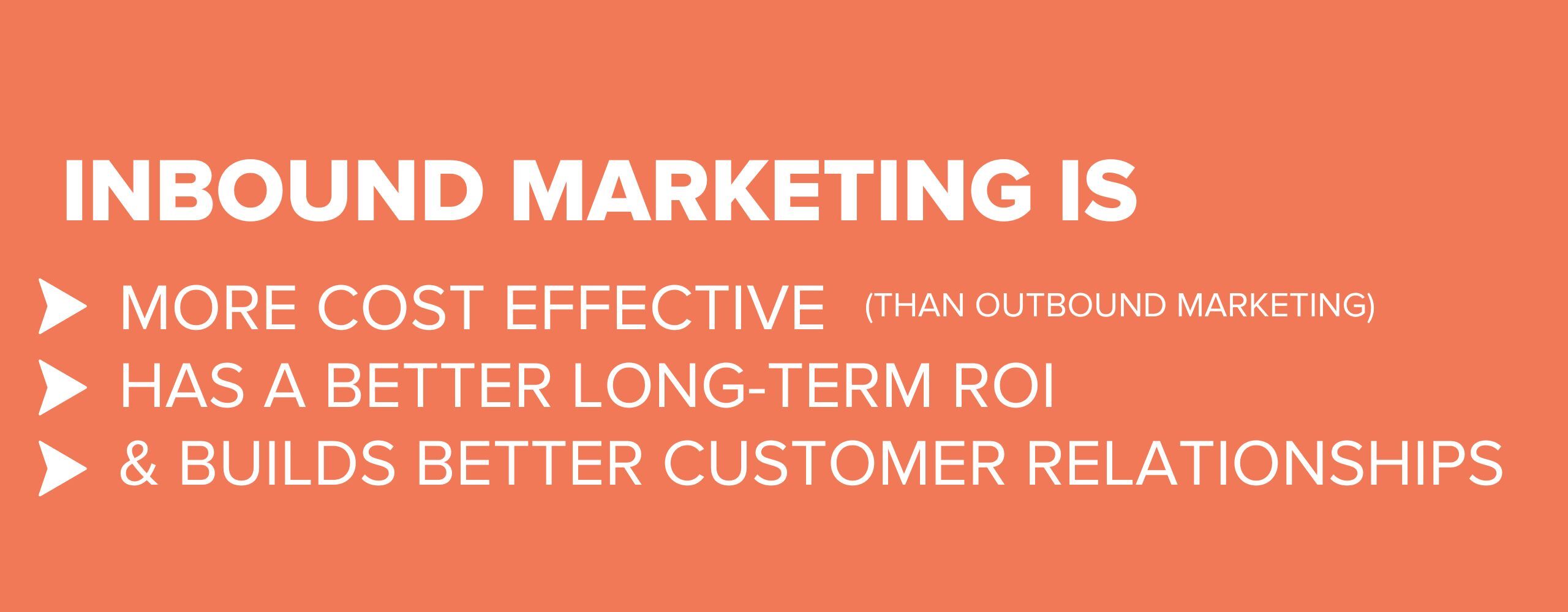
Looking at the numbers above, you may be experiencing a bit of sticker shock, and I don't blame you.
Marketing budgets climbed to 9.5% of total company revenue in 2023, an increase from 6.4% in 2021, according to Gartner, Inc and according to The CMO Survey, 57.9% of marketing budgets in 2023 is spent on digital marketing.
- HubSpot has found 75% of marketers consider inbound marketing to be just as effective as outbound.
- Data from Mashable shows that inbound leads cost 62% less than outbound/traditional leads, and they convert more, too.
Inbound marketing is proving time and time again to be more cost-effective than outbound marketing, have a better long-term return on investment, and build better customer relationships.
Years ago, business owners doubted the internet, saying it was only a fad. They doubted email marketing, followed by search engine marketing, then social media — but look at all of them today.
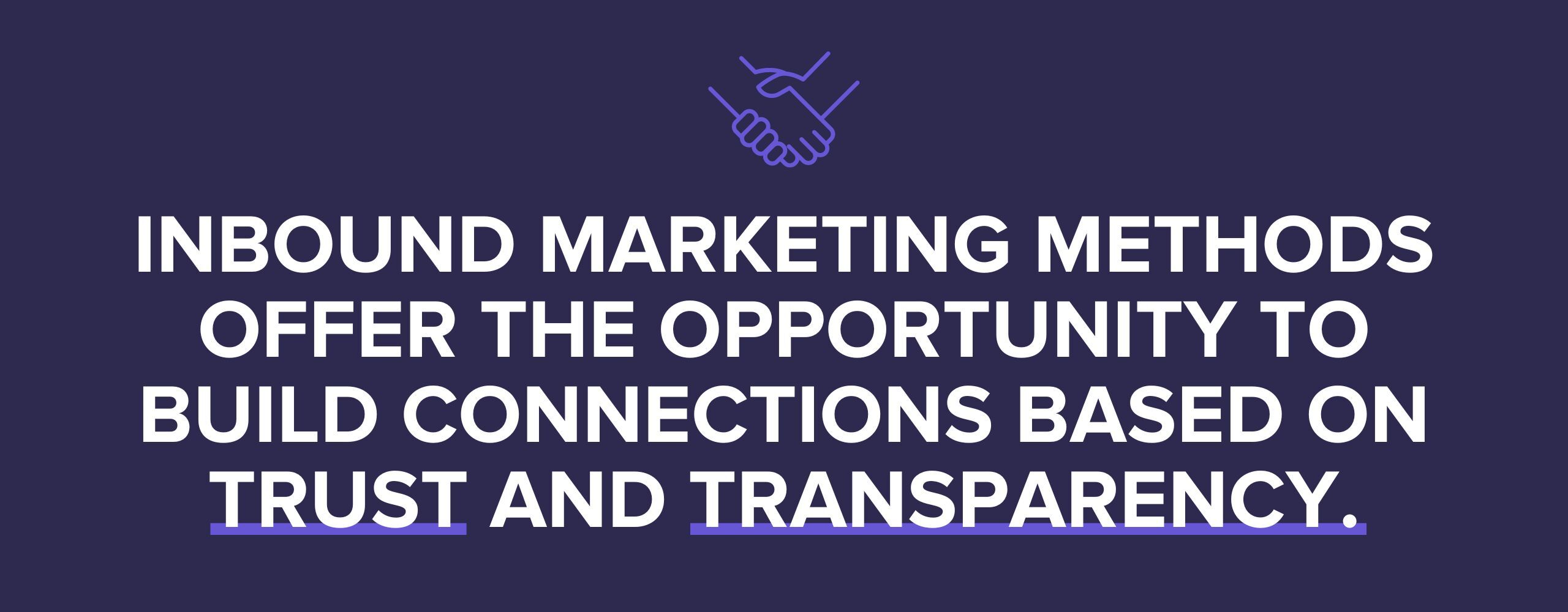
Presidential campaigns are won and lost on social media, YouTube and TikTok sensations are making millions, and blogs are marketing staples.
Inbound marketing methods offer your organization the opportunity to build meaningful connections with prospects based on trust and transparency.
Rather than blasting your message to broad populations like most traditional marketing methods, they let you target customers who are actively looking for solutions like yours.
You'll notice quickly that this value results in heavy returns and outweighs what seems like some large early investments.
Whenever possible, you should consider building an internal team for this initiative.
Having your content production take place in-house, for instance, allows you to truly "own" the content process — and you can be much more nimble as a result.
The beauty of digital marketing and content marketing is that it presents a much more level playing field for businesses of all sizes. If you're willing to invest in a team (and invest in their training), you can outrank the big boys — provided that your content really connects with buyers.
Use educational resources to help get you there. In our online community and learning platform IMPACT+, we offer free courses to help you build and scale your inbound marketing efforts, with information and insights from industry thought leaders and experts.
With the right team and the right knowledge, inbound marketing can revolutionize the way your business operates. It is an investment, to be sure, but one that is sure to bear fruit if you approach it in the right way. Need help getting started? Talk to one of our advisors!


Order Your Copy of Marcus Sheridan's New Book — Endless Customers!

